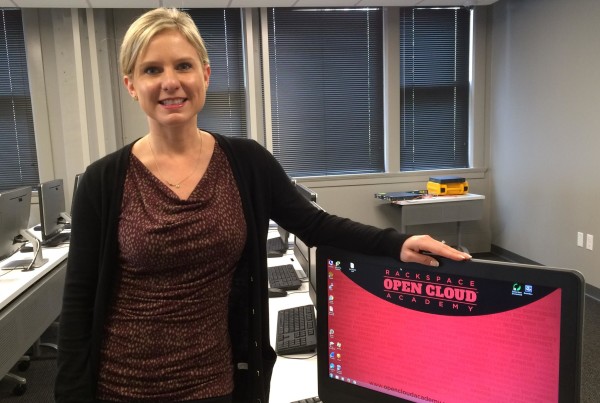This story originally appeared on Houston Public Media.
It’s a Monday afternoon at Houston Ballet’s Center for Dance downtown and a class is just getting underway in an upstairs studio. In a corner, William Marsden is playing away at the upright piano while dancers practice their balance in front of the mirrored wall. They’re all fairly new to ballet, but they also have something else in common: They’ve all been diagnosed with Parkinson’s Disease, a progressive disorder that affects the nervous system. Tremors, stiffness in limbs, and impaired balance are some of the symptoms.
David Hyatt started coming to the class about four months ago and admits he was a little reluctant to try ballet at first. “I do exercise classes, but this is more than just exercise,” he says. “This is a lot of coordination. As my wife says, it’s brain candy.”
It’s all part of Houston Ballet’s Dance for Parkinson’s class, established in 2009 as a collaborative effort with the Houston Area Parkinson’s Society.
“They work hard and we push them… cognitively and physically,” says Jennifer Sommers, associate director of Education and Community Engagement at Houston Ballet, adding that they make sure to be safe about it. She’s one of the instructors who’ve been specially trained to teach the program. “We all work hard and have a good time together.”
Sommers, along with Krissy Richmond and Lucinda Rohrer, lead the group every Monday for an hour-long class, which involves stretching, barre work, and choreographed routines.
“It takes a couple of sessions to get in the door and to realize you don’t have to hit every step, you don’t have to go left when everyone’s going left,” says Kathleen Crist, director of Social Services and Program Development of HAPS. “You don’t have to do everything perfectly. You just put the energy into it and it will happen. Whatever the outcome is, it will be great.”
Patty Masanow found out about the class from a friend and started coming about six months ago. She makes the trip from Sugar Land every week because she’s starting to see improvements, such as having better balance.
“The instructors are great, so I’m learning to listen and try to do what they tell me,” she says.
It’s common knowledge that just about any kind of exercise is beneficial to Parkinson’s patients, but some say dance is one of the best.
“Having a complex, multi-directional movement that is somewhat unpredictable, where you have to change direction, quickly pivot, quickly move, becomes an important part,” says Dr. Stanley Fisher, co-director of Saint Luke’s Marion Bloch Neuroscience Institute in Kansas City.
Fisher says there’s nothing out there yet that can slow down the progression of the disease, but treating the symptoms can definitely improve the quality of life.
The class is based on the Brooklyn-based Mark Morris Dance Group’s model, formed in 2001. Program Director David Leventhal says the gains are two-fold.
“And there are certainly physical and motor benefits by training in dance,” he says. “But what we’ve seen through the research is that there is as much benefit in what we think of as quality of life issues — things like mood, social connection, expression, creativity.”
Those are some of the reasons Dotti Visosky has been coming since Houston’s program began about seven years ago, the same year she was diagnosed with the disease.
“Most people think it’s a sad thing,” Visosky says. “But when we come here, we can forget about having this thing they call Parkinson’s and just enjoy ourselves. And we can do things that we didn’t know we could do.”

















